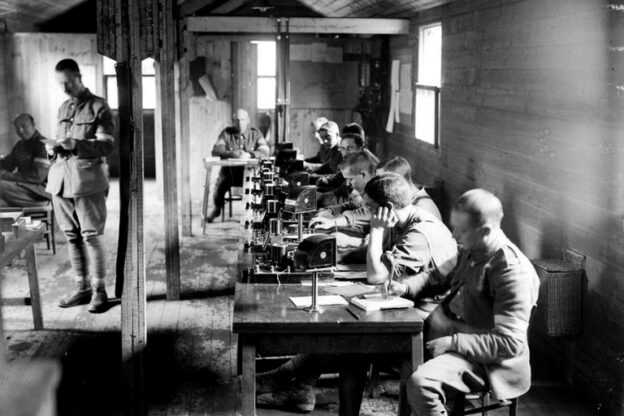The Government Communications Headquarters (GCHQ) has a rich history, closely tied to the evolving security and intelligence needs of the UK.
Origins:
- 1914 – World War I: GCHQ traces its origins back to the First World War, with the formation of the Government Code and Cypher School (GCCS), primarily focusing on code-breaking.
- Bletchley Park: During World War II, the GCCS moved to Bletchley Park. It became the central site for British (and some allied) codebreakers and was instrumental in decrypting German communications, especially the Enigma and Lorenz ciphers. Notable individuals, such as Tommy Flowers, and Alan Turing, played pivotal roles in these efforts.
Post-War Era:

- 1946: After the war, the GCCS was renamed the Government Communications Headquarters (GCHQ).
- 1950s: During the Cold War, GCHQ focused on intercepting and decoding communications from the Soviet Union and its allies. The agency started its long-term association with the US National Security Agency (NSA) during this period.
Cheltenham:
- 1952: GCHQ moved its main operations from Eastcote in London to Cheltenham, where it remains to this day. This move was largely due to concerns about a potential nuclear threat to London.
Evolving Challenges:
- 1980s: The Falklands War saw GCHQ playing a significant role in providing intelligence support to the British military.
- Zircon Affair: In the mid-1980s, a political controversy erupted over a BBC documentary that intended to expose a secret satellite program, Project Zircon, which GCHQ was purportedly involved in. The documentary was ultimately blocked.
- End of the Cold War: With the dissolution of the Soviet Union, GCHQ adapted to a changing geopolitical landscape, focusing on newer threats and challenges.
21st Century:
- Post 9/11: The rise of global terrorism after the September 11 attacks in 2001 saw GCHQ playing a central role in monitoring communications related to potential threats.
- 2010s – Digital Age: As the world became more digital and interconnected, GCHQ evolved to address the growing challenges of cyber threats, espionage, and cyber warfare.
- Edward Snowden Revelations (2013): The whistleblower Edward Snowden released documents that revealed a range of surveillance programs by the NSA and its allied agencies, including GCHQ. This brought GCHQ into the global spotlight, raising debates about privacy, surveillance, and the balance between security and individual rights.
- Creation of the CESG: GCHQ helped to establish the Communications-Electronics Security Group (CESG) in 1960.
- Creation of NCSC: Recognizing the increasing importance of cyber threats, GCHQ was instrumental in the establishment of the National Cyber Security Centre (NCSC) in 2016, which operates as part of GCHQ, and absorbed the CESG.
Conclusion:
GCHQ’s history is intertwined with the UK’s security and intelligence needs over the past century. From decoding wartime communications to navigating the challenges of the digital age, GCHQ has been at the forefront of ensuring the UK’s security in a rapidly changing world.
